PIMinto vs Akeneo: The Smart Alternative for Growing Businesses in 2025
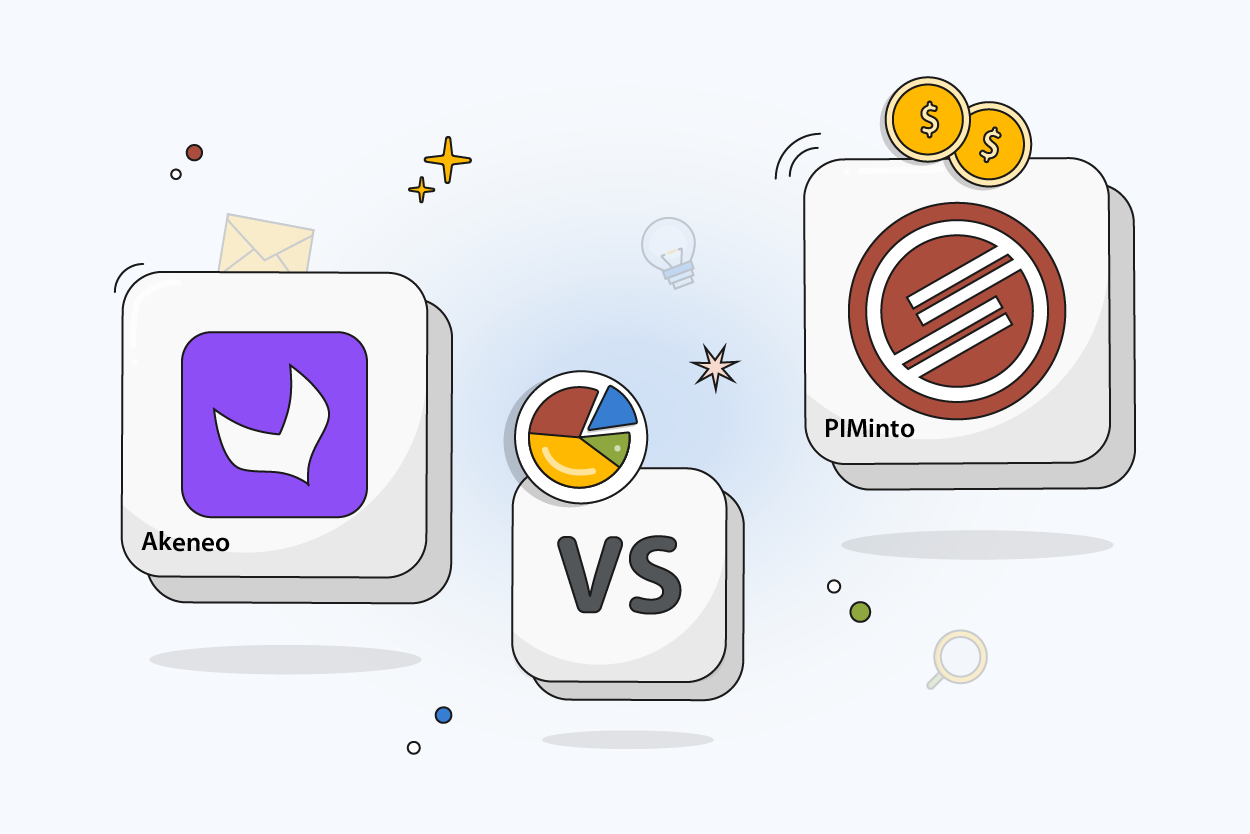
Your product catalog is the engine of your ecommerce business. Every SKU, every variant, every piece of product information needs to flow seamlessly across multiple channels to reach customers where they shop. But managing this complexity manually? That's a recipe for errors, missed opportunities, and frustrated teams.
Product information management tools have become essential for competitive businesses. You need a PIM system that can handle the complexity without breaking your budget or overwhelming your team.
This brings us to a crucial decision facing growing businesses: should you invest in Akeneo, the established enterprise giant, or consider PIMinto, the agile alternative built for modern ecommerce teams?
Let's dive into an honest Akeneo vs PIMinto PIM software comparison that cuts through the noise and focuses on what really matters for your bottom line.
PIMinto delivers equal functionality to what most brands actually use in Akeneo, but at up to 80% lower cost and with an implementation measured in weeks, not months.
PIMinto vs Akeneo: A Quick Overview
Akeneo and PIMinto are both made to assist companies in managing and centralizing their product data. Their approaches to this objective and the target audience, however, differ greatly.

PIMinto
PIMinto is a modern PIM solution built for ecommerce teams that need flexibility, automation, and speed. It provides:
- Easy setup and an intuitive user interface
- Seamless multi-channel publishing
- Essential features found in less expensive plans
- Built-in collaboration tools
- Outstanding return on investment (ROI)
The platform is ideal for brands that want to avoid heavy technical overhead while still maintaining full control over their product information.
Akeneo
Akeneo is an enterprise-grade PIM platform with a strong global presence. It offers:
- Comprehensive data governance capabilities
- Complex workflows and team permissions
- A full suite of enterprise-level integrations
- A Product Cloud platform with shared catalogs and supplier data management
- Multi-language and multi-region capabilities
Akeneo also offers an open-source PIM that companies can download, install, and run independently.
Why This Comparison Matters
It can be challenging to determine which PIM tool best suits your company, given the abundance of options available on the market, all of which promise efficiency, automation, and scale.
PIMinto and Akeneo both offer robust PIM capabilities. But extensive feature lists can be confusing if there isn't a clear, side-by-side analysis.
This comparison simplifies the differences in a useful manner to allow you to assess what is most important according to how your team works, how quickly you're expanding, and the flexibility you require.
The Business Impact: What's Really at Stake
The choice between PIMinto vs Akeneo directly affects your team’s productivity, your time to market, and your bottom line.
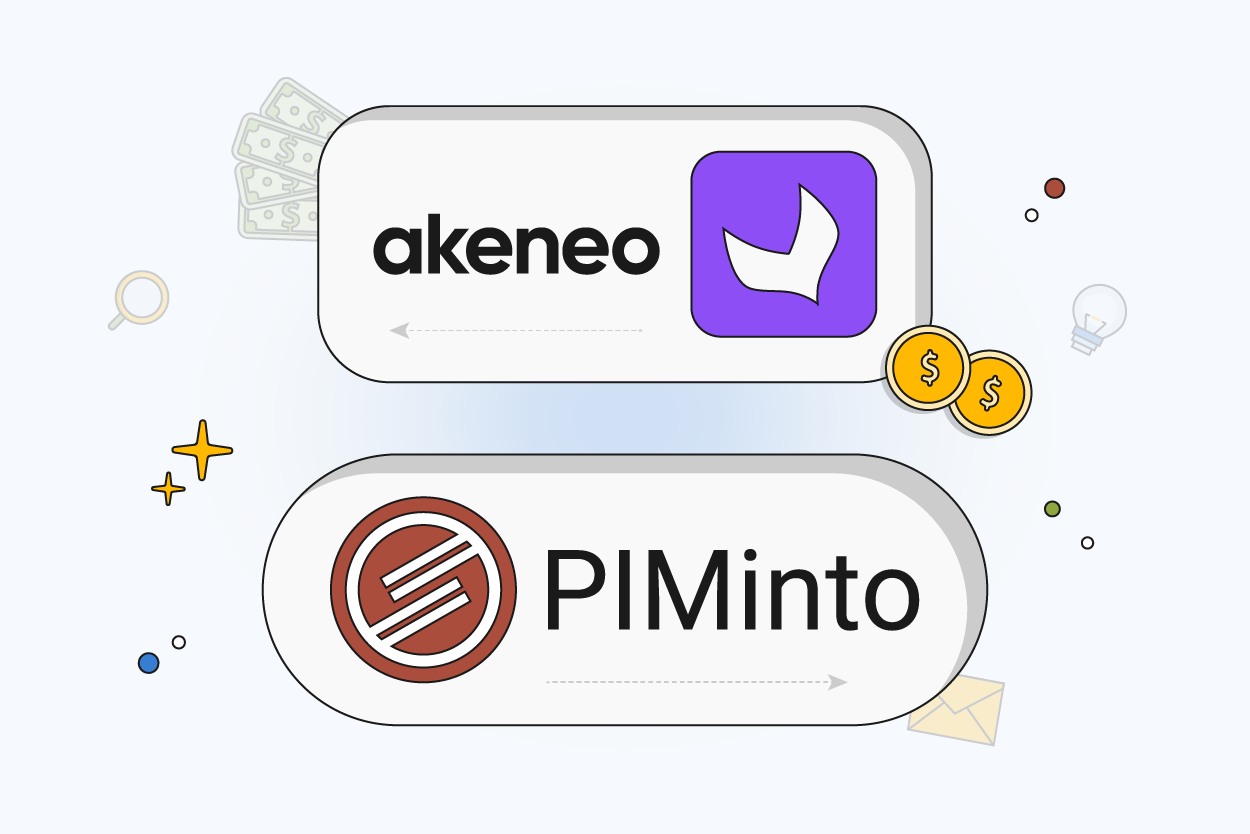
The Hidden Cost of Complex PIMs
Here's something most PIM vendors won't tell you: complexity kills productivity. When your team spends more time fighting with the system than managing products, you've got a problem. Complex PIMs often require specialized training, dedicated administrators, and ongoing consulting support. If your PIM requires a full-time administrator and takes three months to implement, that's a big investment before you even start to see results. Many expanding companies struggle to access the features they need while paying for those they don't. In addition to the license fee, this results in the ongoing operational overhead of maintaining a complex system, frustrated team members, and lost opportunity costs of delayed product launches.
What Growing Businesses Actually Need
Most growing ecommerce businesses don’t need a massive, all-encompassing PIM. They need something simple, scalable, and efficient.
What they find more impactful includes:
- Easy product data entry and updates
- Quick syndication across platforms and channels
- Automation to eliminate repetitive tasks
- Support for product variants and bundles
- Collaborative tools without bloated workflows
- Clear, predictable pricing
PIMinto is designed around these practical requirements, giving you everything you need and nothing you don’t.
Real-World Scenario
Let’s say you’re a DTC brand scaling up after success on your ecommerce site. You’re now launching on Amazon and expanding to international markets. You’ve got a small team managing 2,500 SKUs and adding new variants weekly.
With Akeneo, onboarding might require a three-month setup and additional modules for app integrations. By the time your team is trained and the system is live, you've spent tens of thousands and lost critical time.
With PIMinto, setup is done in weeks. Your team can import products, automate descriptions, and push updates to all your channels, without needing a developer or a support ticket.
Real Companies, Real Results with PIMinto
Key Features Comparison
Now let's get into the nuts and bolts of what each platform offers. Remember, features are only valuable when you can use them effectively.
Core PIM Functionality
| Feature | PIMinto | Akeneo |
|---|---|---|
| Central Product Repository | ✅ Included | ✅ Included |
| Multi-Channel Publishing | ✅ Included | ✅ Included |
| Digital Asset Management (DAM) | ✅ Built-in | ✅ Included |
| Workflow & Team Permissions | ✅ Built-in (even on lower tiers) | ❌ Only in Advanced+ tiers |
| Product Versioning & Restore | ✅ All plans | ❌ Only in Advanced+ tiers |
| Bulk Editing Tools | ✅ Included | ✅ Included |
| API Integration | ✅ Included | ✅ Included |
PIMinto Advantages
PIMinto delivers critical PIM features without requiring an enterprise plan. Key advantages include:
- No feature gating behind high-priced tiers
- Friendly UX that reduces training time
- Full access on mobile devices
- AI assistant for automated descriptions and data entry
- Built-in DAM and 360 product spinners
Akeneo Advantages
Akeneo excels in large-scale use cases where complexity is expected. It’s especially useful for:
- Companies needing advanced localization
- Large teams with strict data governance
- Custom integrations with ERP systems
- Businesses already embedded in the Akeneo ecosystem
Scalability & Flexibility
Both PIM platforms are scalable. But how they approach scale is very different.
PIMinto Approach
PIMinto takes a pragmatic approach to scalability. The platform is designed to grow with your business without requiring major architectural changes. As your product catalog expands, you simply upgrade your plan rather than rebuilding your entire system.
PIMinto offers unlimited output channels, so you can push product data to as many platforms, marketplaces, or storefronts as you need, without hitting artificial limits.
And if you ever decide to downgrade or pause your subscription, you’ll still maintain full access to your stored product data. That flexibility ensures you’re never locked out of your catalog, even during slower sales cycles or seasonal changes.
Akeneo Approach
Akeneo scales well, but assumes an enterprise framework. That means:
- Structured data hierarchies, but a steep learning curve
- Requires technical teams for implementation
- Scaling often means upgrading to expensive tiers
- Best suited for organizations with internal IT departments
Pricing Reality Check
Let’s talk about one of the most decisive factors in PIM selection: cost.
PIMinto: Transparent & Predictable
PIMinto's pricing is clear, published, and designed to support growth.
| Plan | Monthly Price | Best For |
|---|---|---|
| Starter | Free | Free PIM for new users |
| Essentials | $300 | Small teams, early-stage sellers |
| Premium | $600 | Multichannel ecommerce brands |
| Super | $950 | Complex catalogs & automation |
| Extreme | Call | Custom enterprise-grade features |
Akeneo: Enterprise Pricing Model
Akeneo starts at $45,000 per year with its Growth Package, but that tier excludes:
- Collaboration workflows
- Product restoration
- Business analytics
If you want full access, you’ll need to upgrade to Advanced or Premium plans. Pricing is available only through sales conversations. This can easily push annual costs into six figures.
Akeneo's app store ecosystem adds another layer of complexity to their pricing model. With over 200 apps available, businesses often find themselves needing additional functionality that isn't included in their base plan.
Each app comes with its own quote-based pricing structure, meaning you'll need to negotiate costs for everything from specialized connectors to advanced analytics tools.
These costs often lead growing ecommerce brands to seek Akeneo alternatives that are more budget-friendly.
Total Cost of Ownership Analysis
When comparing the total cost of ownership over three years, the difference becomes stark: PIMinto's Premium plan costs $7,200 annually, including all core features. Over three years, that's $21,600 with predictable scaling costs.
Akeneo's Growth Package starts at $45,000 annually but often requires additional investments. Over three years, including ongoing support, additional app licenses, and system maintenance, businesses can expect to invest $150,000 or more.
Choosing PIMinto can free up considerable capital. You can redeploy this war chest into ad spend, inventory, and product innovation.
Support & Implementation Experience
Support quality can make or break your experience with a PIM platform.

PIMinto: Personal Partnership Approach
PIMinto treats every customer like a valued partner. The support team is accessible, responsive, and focused on helping you succeed rather than just resolving tickets. When you have questions, you talk to real people who understand your business challenges.
Implementation is designed to be collaborative. Rather than a lengthy consulting engagement, PIMinto focuses on getting you operational quickly and then optimizing based on your real-world usage patterns.
Akeneo: Enterprise Support Model
Akeneo provides professional enterprise support with dedicated account managers, comprehensive documentation, and extensive training programs. The support structure is designed for large organizations with dedicated IT teams.
Smaller teams may find the process overwhelming and the support model less personal.
Implementation Timeline Reality: PIMinto Gets You Live 5x Faster
Here's where the rubber meets the road. PIMinto implementations typically take 2-4 weeks for most businesses. You're importing data, configuring workflows, and training users within a month.
Akeneo implementations often take 3-6 months, sometimes longer for complex customizations. The longer timeline reflects the platform's complexity and the thorough approach to enterprise implementations.
For growing businesses, time is money. A four-month implementation delay can mean missed opportunities and frustrated stakeholders. PIMinto gets you operational 5x faster.
Use Case Scenarios: Who Should Choose What
There’s no one-size-fits-all answer, but here’s a practical way to assess what’s right for your business.
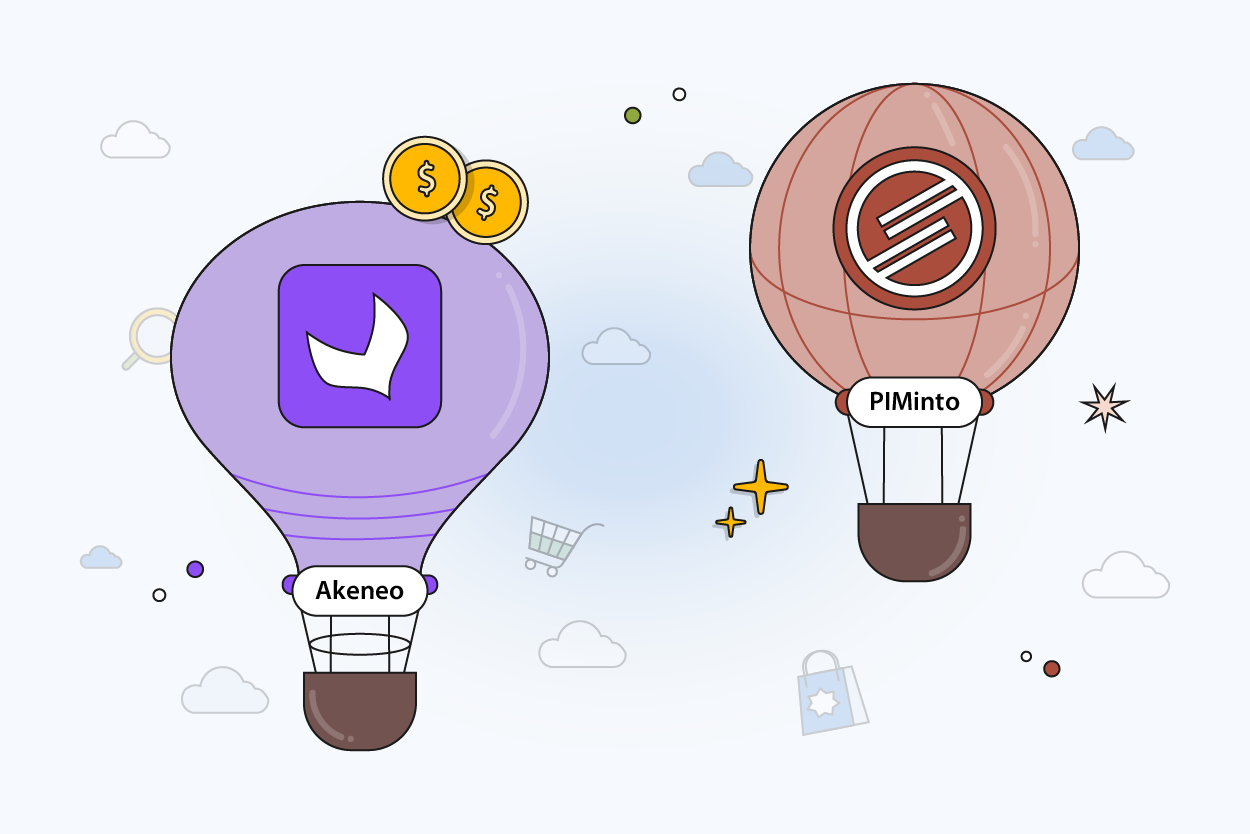
PIMinto is Perfect For
PIMinto is built to serve a broad spectrum of ecommerce businesses. Its scalable plans, unlimited outputs, and automation-driven workflows make it adaptable to companies at any stage of growth.
- Emerging brands focused on their DTC site
- Mid-market teams managing thousands SKUs across multiple channels
- Enterprise organizations that want full-featured PIM without enterprise bloat
- Lean ecommerce teams that need automation without relying on developers
- Agencies or multi-brand retailers looking to centralize and syndicate across catalogs
- Data-driven marketers who need flexible, real-time control of product content
Whether you're managing a few hundred products or hundreds of thousands, PIMinto’s flexible foundation supports your operations without unnecessary overhead.
Akeneo Might Be Better For
Akeneo's PIM capabilities shine brightest for large-scale operations that can justify the complexity and investment:
- Enterprises managing millions of SKUs globally
- Teams with dedicated IT, dev, and ops departments
- Companies already on Akeneo Product Cloud
- Organizations that require extensive approval workflows
- Large retailers with multilingual product data needs
The Honest Assessment: PIMinto is the Clear Winner for Growing Businesses
Both PIMinto and Akeneo are powerful, but the choice is clear when you consider real business needs:
Akeneo shines for the small percentage of corporations that need enterprise-level governance and don't mind long timelines or high costs. But for the vast majority of growing businesses, this complexity is overkill.
PIMinto, on the other hand, is made for fast-growing ecommerce teams who need a lean, efficient system that doesn't hold them back. It delivers the same core functionality at a fraction of the cost, with faster implementation and better support.
The choice depends on your team size, technical capacity, and how fast you want to move. If you're scaling rapidly and want a system that works out of the box, PIMinto is clearly the better choice.
The Smart Choice for 2025: PIMinto Wins
In 2025, ecommerce is about speed, adaptability, and focus. Tools that support these values will outperform the ones that demand endless customization and cost.
PIMinto is the smart Akeneo alternative for growing businesses because it delivers enterprise muscle without enterprise muscle-ache: faster deployment, lower TCO, and a UX your team will enjoy using.
You’ll save time, reduce cost, and get the features that matter most without compromising on performance.
See Why Growing Brands Choose PIMinto Over Akeneo
Ready to explore what PIMinto can do for your business? Book a demo today to see the advantages of flexible product data management.
Blogs & Views

Product Descriptions Optimization: 7 Proven Strategies for eCommerce Success
Every word on your product page matters. The right description attracts search traffic, builds trust, and drives sales. Wheth...

15 Challenges for eCommerce in 2025
Running an online store in 2025 is exciting and stressful. Ecommerce has evolved to be one of the leading industries globally...
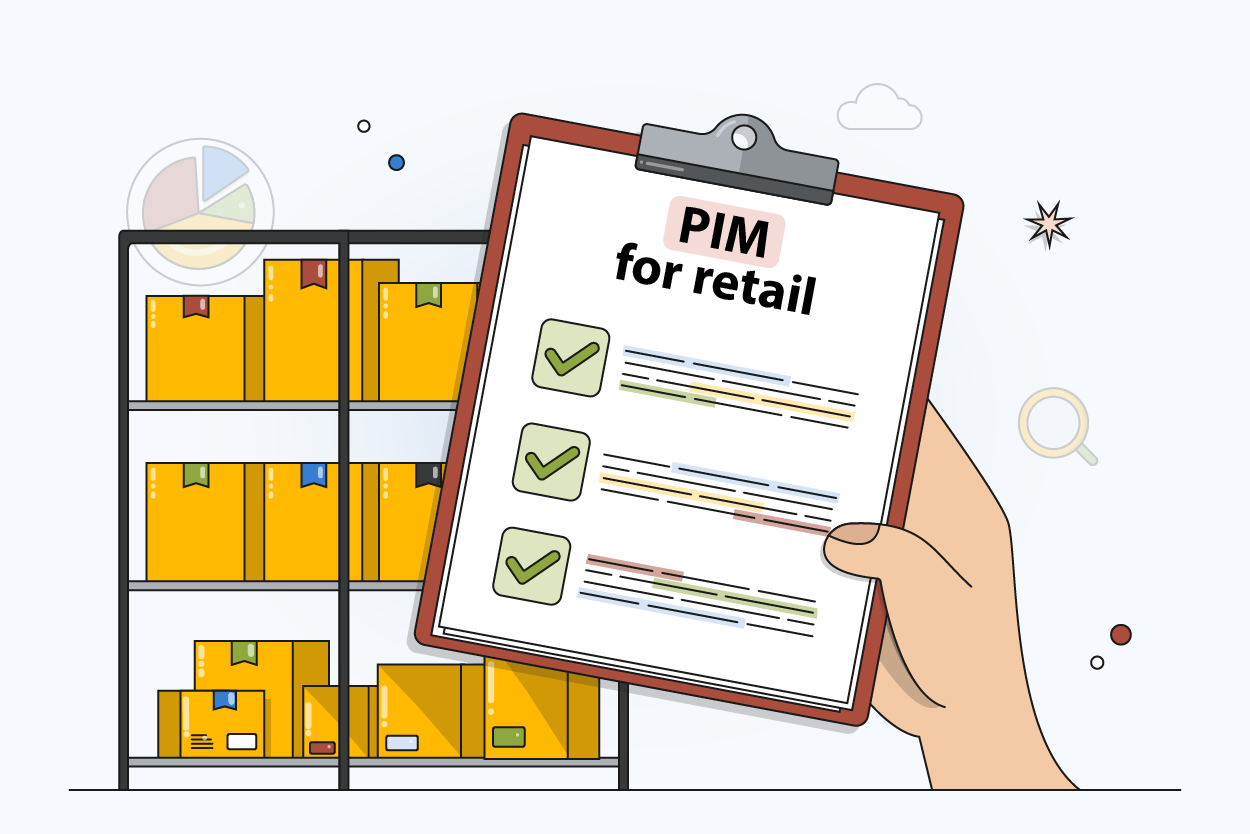
The Complete Guide to PIM for Retail: Transform Your Product Management
Product data drives retail. Every product in your inventory has names, prices, specs, images, videos, and more. Multiply that...
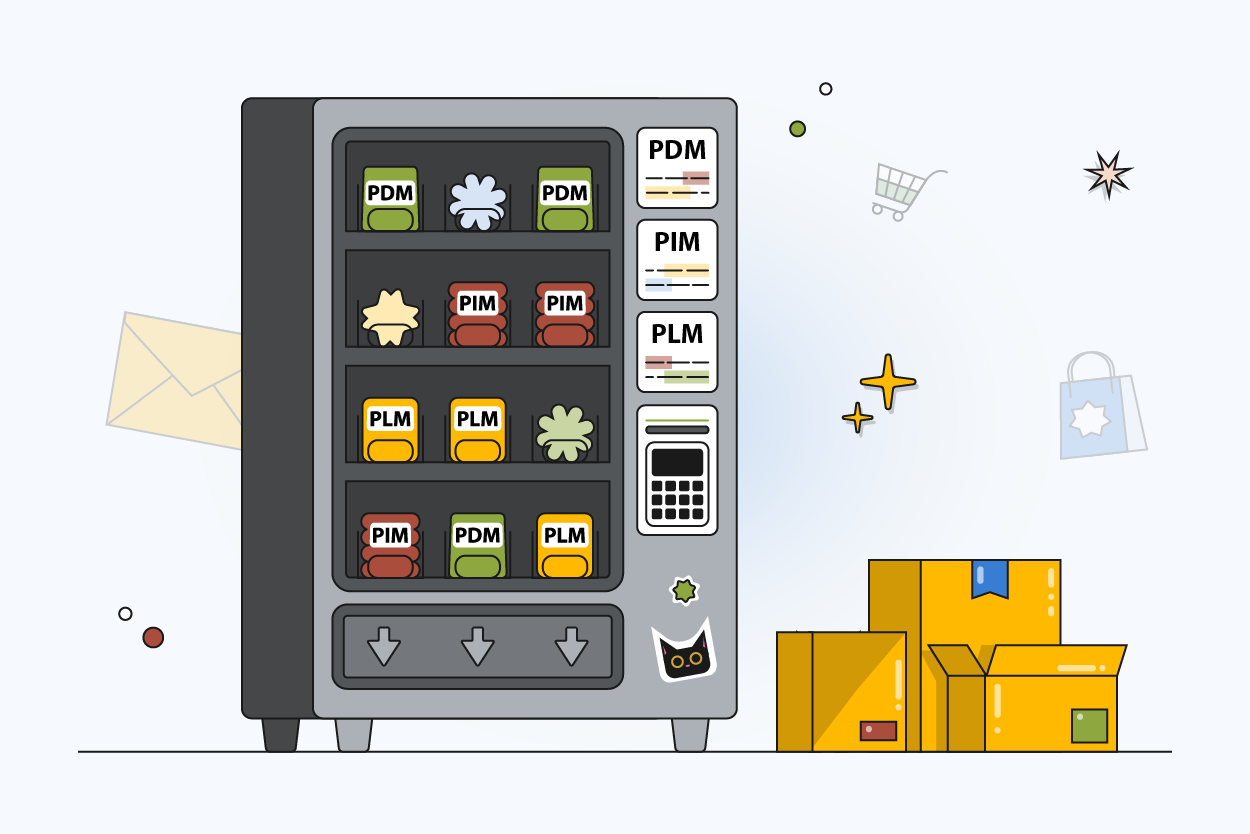
What is Product Data Management?
Every product has a story to tell before it reaches a customer. An idea sparks, teams draft designs, build prototypes, and re...


